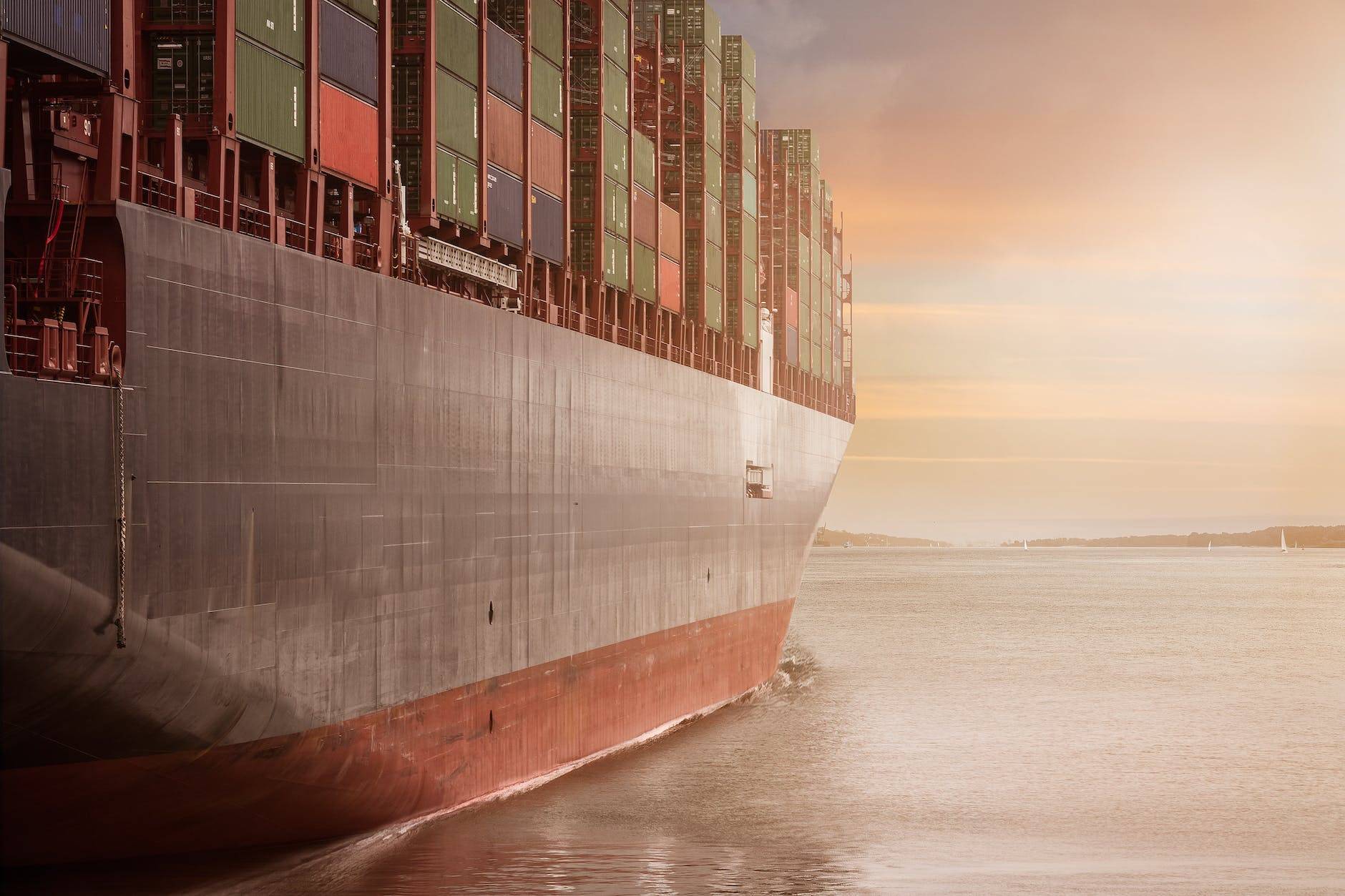Introduction: The Turbulent Journey of the Supply Chain
The supply chain, the backbone of global commerce, has faced unprecedented challenges in recent years. From natural disasters to global pandemics, the stability of the supply chain has been tested time and again.
However, recent trends and developments indicate a return to stability, a transformation that holds significant implications for businesses, consumers, and economies worldwide.
This article delves into the factors contributing to this newfound stability, the strategies employed by industry leaders, and the future prospects of the global supply chain.
The Challenges That Shaped the Modern Supply Chain
1. Global Pandemics and Health Crises
The outbreak of the COVID-19 pandemic revealed weak points in the global supply chain, leading to interruptions, setbacks, and significant economic setbacks.
Insights gained from navigating this challenging period have prompted the development of creative strategies and measures to strengthen and safeguard the supply chain against future disruptions.
2. Political and Trade Uncertainties
Trade wars, tariffs, and political tensions have added complexity to international trade, requiring businesses to adapt and find alternative sourcing and distribution channels.
These economic confrontations, often rooted in political disagreements and tensions between nations, have introduced a new layer of intricacy to the realm of international commerce. Such uncertainties can significantly impact the flow of goods, services, and investments across borders.
As a result, businesses, in their bid to navigate these unpredictable waters, are compelled to re-evaluate and modify their existing trade strategies. This often involves seeking alternative sources for their products and identifying new distribution channels to ensure that their operations remain uninterrupted and profitable.
In essence, the evolving geopolitical landscape mandates that businesses remain agile, proactive, and innovative in their approach to global trade.
3. Technological Advancements and Cyber Threats
The dawn of the digital age has brought about transformative changes in the supply chain, ushering in an era of efficiency, automation, and real-time data analytics. Innovations such as the Internet of Things (IoT), artificial intelligence, and blockchain have redefined how goods are produced, tracked, and delivered, making supply chain operations more streamlined and responsive than ever before.
However, this technological evolution is a double-edged sword. As businesses increasingly rely on digital platforms and interconnected systems, they also become more vulnerable to a myriad of cyber threats. From data breaches to ransomware attacks, the digital realm is fraught with potential risks that can compromise sensitive information, disrupt operations, and result in significant financial losses.
For supply chain managers, this presents a unique challenge. While they must continue to harness the power of technological advancements to stay competitive, they also need to prioritize robust cybersecurity measures. This involves not just implementing advanced security protocols but also fostering a culture of cyber awareness within the organization.
Regular training, timely software updates, and multi-layered security defenses become essential components in this balancing act. In essence, as the supply chain becomes more technologically advanced, the imperative to protect it from cyber threats grows in tandem.
The Path to Stability
1. Diversification of Supply Sources
By diversifying supply sources, businesses have reduced dependency on single regions or suppliers, enhancing stability and resilience against unforeseen disruptions.
Historically, many businesses relied heavily on specific regions or individual suppliers to fulfill their supply chain needs. While this might offer cost advantages or logistical conveniences in the short term, it also exposes companies to significant vulnerabilities in the face of disruptions, be they political, environmental, or economic.
Recognizing these risks, forward-thinking businesses have started to adopt a strategy of diversifying their supply sources. This means they no longer depend solely on one supplier or region but spread their sourcing across multiple vendors and geographical areas. Such a diversified approach offers several advantages:
- Risk Mitigation: By not being overly reliant on a single source, businesses can better navigate challenges that might affect one particular supplier or region, ensuring a more consistent supply flow.
- Enhanced Stability: A diversified supply chain can absorb shocks better. For instance, if one supplier faces production issues, others can potentially ramp up their output to fill the gap.
- Greater Negotiation Power: With multiple suppliers at hand, businesses can negotiate better terms, ensuring cost-effectiveness and favorable delivery timelines.
- Adaptability: In a rapidly changing global landscape, having a diversified supply chain allows businesses to adapt quickly to shifting economic or political climates, ensuring they can pivot their strategies as needed.
Diversification of supply sources is akin to a safety net for businesses, ensuring they remain resilient and agile in the face of the unpredictable challenges of the modern commercial world.
2. Investment in Technology and Automation
Investing in cutting-edge technology, such as AI, IoT, and blockchain, has streamlined operations, improved efficiency, and enabled real-time tracking and monitoring.
As businesses strive for greater efficiency and precision, the role of technology and automation has become paramount.
- The Power of AI (Artificial Intelligence): AI has transformed the way businesses operate. From predictive analytics to optimize inventory levels to chatbots enhancing customer service, AI offers tools that can analyze vast amounts of data quickly, providing actionable insights. This not only streamlines operations but also aids in making informed decisions, reducing wastage, and enhancing customer satisfaction.
- IoT (Internet of Things) in Action: IoT refers to the interconnected nature of devices and systems that communicate with each other over the internet. In the context of supply chains, IoT devices can monitor the condition of goods in real-time during transportation, ensuring they are stored under optimal conditions. Sensors can track temperature, humidity, and even the location of products, ensuring timely and safe delivery.
- Blockchain’s Transparent Ledger: Often associated with cryptocurrencies, blockchain’s utility extends far beyond. In supply chain management, blockchain provides a transparent and tamper-proof ledger of transactions. This ensures traceability of products from their origin to the end consumer, enhancing trust and accountability in the process.
- Automation for Efficiency: Automation, powered by robotics and advanced software systems, has drastically reduced manual interventions in various supply chain processes. This not only speeds up operations but also reduces human errors, ensuring a more consistent and efficient workflow.
The cumulative effect of these technological investments is profound. Operations become more streamlined, reducing lead times and operational costs. Real-time tracking ensures businesses and consumers alike are always in the know, enhancing trust and reliability.
Moreover, with the ability to monitor and analyze operations in real-time, businesses can proactively address challenges, ensuring smoother and more efficient supply chain management.
The strategic investment in technology and automation is not just about staying updated with the latest tools; it’s about reshaping the very fabric of business operations to be more efficient, transparent, and adaptable in an ever-evolving market landscape.
3. Sustainability and Ethical Practices
The growing emphasis on sustainability and ethical sourcing has led to more transparent and responsible supply chain practices, fostering trust and long-term stability.
This awareness isn’t just confined to consumers; businesses too are recognizing the importance of integrating sustainability and ethical considerations into their operations.
- Environmental Consciousness: The detrimental effects of climate change, deforestation, and pollution have underscored the need for sustainable business practices. Companies are increasingly adopting eco-friendly measures, from reducing carbon footprints to minimizing waste. For instance, many businesses are transitioning to renewable energy sources, utilizing sustainable packaging, and implementing recycling initiatives.
- Ethical Sourcing: Beyond environmental concerns, there’s a growing emphasis on the ethical dimensions of sourcing. This pertains to ensuring that products or materials are sourced from suppliers who adhere to fair labor practices, do not exploit workers, and maintain safe working conditions. Ethical sourcing also involves ensuring that suppliers do not engage in environmentally harmful practices.
- Transparency is Key: With the advent of technology, consumers are now more informed than ever. They demand to know the origins of the products they consume and the practices of the companies they support. In response, businesses are adopting transparent supply chain practices, often providing detailed information about product origins, manufacturing processes, and the sustainability measures they’ve implemented.
- Building Trust and Loyalty: When businesses adopt sustainable and ethical practices, they’re not just adhering to regulations or tapping into a trend. They’re building trust with their consumer base. Customers are more likely to support and stay loyal to brands that align with their values, ensuring long-term stability and growth for the business.
- Economic Benefits: While the initial transition to sustainable and ethical practices might involve costs, in the long run, these practices often lead to economic benefits. Sustainable operations can lead to cost savings, and ethical practices can open doors to new markets and customer segments that prioritize responsible consumption.
The shift towards sustainability and ethical practices in supply chains represents a holistic approach to business. It’s not just about profit margins; it’s about creating a positive impact on the world, building trust with consumers, and ensuring that the business remains viable and respected in the long run. By prioritizing these values, companies are paving the way for a more responsible and sustainable future in commerce.
Success Stories – How Industry Leaders Are Paving the Way
1. Company A: Agile and Adaptive Strategies
Company A’s success in navigating supply chain challenges lies in its agile and adaptive strategies, leveraging data analytics, and fostering strong supplier relationships.
Here’s a closer look at how their agile and adaptive strategies have positioned them at the forefront of supply chain management:
- Embracing Agility: At the heart of Company A’s approach is agility. This means they are not rigidly tied to a single strategy or methodology. Instead, they are quick to respond to changes in the market, be it a sudden surge in demand, a new competitor entering the scene, or unforeseen global events that could disrupt their supply chain. Their operations are designed to pivot swiftly, ensuring they can meet challenges head-on without significant downtimes or losses.
- Harnessing the Power of Data Analytics: In today’s digital age, data is often likened to gold, and for a good reason. Company A leverages advanced data analytics to gain insights into various facets of their supply chain. This could involve tracking consumer buying patterns to forecast demand, monitoring global events that might impact supplier regions, or analyzing transportation logistics to find the most efficient routes. By making informed decisions based on real-time data, they can preempt challenges and optimize their operations.
- Building Strong Supplier Relationships: Beyond technology and analytics, Company A understands the value of human relationships. They invest time and resources in fostering strong bonds with their suppliers. This isn’t just about negotiating the best prices; it’s about building mutual trust and understanding. When challenges arise, this strong relationship foundation means that both Company A and their suppliers are more likely to collaborate effectively to find solutions, ensuring minimal disruptions.
- Adaptive Mindset: Adaptability is more than just a strategy; it’s a mindset. Company A promotes a culture where employees are encouraged to think outside the box, anticipate potential challenges, and be ready to adapt to changing circumstances. This culture of adaptability ensures that the entire organization, from top-level management to ground-level staff, is aligned in its approach to navigating the complex world of supply chain management.
In a nutshell, Company A’s success story is a testament to the power of combining agile methodologies, technological prowess, and the human touch. Their approach to supply chain management underscores the importance of being prepared, staying informed, and valuing relationships in the quest for business excellence.
2. Company B: Focus on Sustainability
Company B’s commitment to sustainability has not only enhanced its brand image but also contributed to a more stable and resilient supply chain.
Let’s delve deeper into how their unwavering commitment to sustainability has redefined their brand and fortified their supply chain:
- Environmental Stewardship: Company B has taken significant strides in reducing its carbon footprint, minimizing waste, and promoting eco-friendly practices. Whether it’s by sourcing renewable energy, adopting sustainable packaging solutions, or implementing waste reduction initiatives, the company showcases its dedication to preserving the planet for future generations.
- Ethical Procurement: Beyond environmental concerns, Company B’s sustainability ethos extends to its sourcing practices. They prioritize suppliers who adhere to ethical labor practices, ensuring fair wages, safe working conditions, and the absence of exploitative practices. This not only ensures a morally sound supply chain but also reduces the risk of disruptions due to labor disputes or regulatory crackdowns on unethical suppliers.
- Brand Enhancement: In today’s market, a company’s reputation is intrinsically linked to its sustainability efforts. Company B’s commitment to green and ethical practices has bolstered its brand image, making it a preferred choice for environmentally-conscious consumers. This not only translates to increased sales but also fosters customer loyalty, as consumers are more likely to stick with brands that align with their values.
- Economic Resilience: While sustainable practices might sometimes entail higher upfront costs, they often lead to long-term economic benefits. For instance, energy-saving initiatives reduce operational costs, and ethical sourcing can lead to more stable supplier relationships. Moreover, as regulations around sustainability become stricter, Company B is already ahead of the curve, reducing the risk of future compliance-related disruptions.
- Community Engagement: Company B’s sustainability initiatives often involve collaborations with local communities, whether it’s through supporting local artisans, engaging in reforestation projects, or backing community-based renewable energy initiatives. This not only amplifies their positive impact but also strengthens their ties with local communities, ensuring a more resilient and supportive operational environment.
In essence, Company B’s focus on sustainability is a holistic approach that intertwines environmental responsibility, ethical operations, and community engagement.
Their journey underscores the fact that sustainability is not just a buzzword or a marketing tactic; it’s a comprehensive strategy that drives brand value, operational stability, and long-term success in today’s business landscape.
The Future of the Supply Chain – Trends and Predictions
1. Continued Emphasis on Technology Integration
As we navigate the complexities of the modern business landscape, the role of technology in shaping and refining supply chain operations cannot be overstated.
Here’s an in-depth look at how the persistent focus on integrating cutting-edge technologies is revolutionizing the supply chain:
- Optimization through Automation: One of the most significant impacts of technology on the supply chain is the potential for optimization. Advanced systems and automation tools streamline processes, reduce manual interventions, and enhance efficiency. Whether it’s automated warehousing solutions, robotics in manufacturing, or AI-driven demand forecasting, technology ensures operations are leaner and more responsive.
- Personalization at Scale: With the advent of big data and analytics, supply chains can now offer personalization like never before. By analyzing consumer behavior, preferences, and purchasing histories, businesses can tailor their offerings, ensuring products and services align closely with individual customer needs. This level of personalization, achieved at scale, enhances customer satisfaction and drives loyalty.
- Risk Mitigation with Predictive Analysis: The unpredictable nature of global events, market fluctuations, and consumer trends can pose significant risks to supply chains. However, with predictive analytics, businesses can anticipate potential disruptions and challenges. By analyzing historical data and identifying patterns, these tools provide insights into possible future scenarios, allowing businesses to prepare and adapt in advance.
- Real-time Monitoring and Tracking: Technologies like the Internet of Things (IoT) have made real-time monitoring a reality. Sensors can track products throughout their journey, from manufacturing to delivery, ensuring transparency and timely interventions if issues arise. This not only enhances accountability but also ensures products reach their destination in optimal condition.
- Enhanced Collaboration through Digital Platforms: The integration of digital platforms and cloud-based solutions facilitates better communication and collaboration among various stakeholders in the supply chain. Suppliers, manufacturers, logistics providers, and retailers can seamlessly share data, coordinate operations, and make collective decisions, ensuring a more cohesive and efficient supply chain.
- Sustainability through Tech Innovations: Emerging technologies also play a pivotal role in driving sustainable practices. For instance, blockchain can ensure traceability and authenticity of sustainably sourced products, while AI can optimize resource usage, reducing waste.
In conclusion, the continued emphasis on technology integration in the supply chain is not just a trend but a fundamental shift in how businesses operate.
By harnessing the power of these technological advancements, supply chains can become more agile, customer-centric, resilient, and sustainable, positioning businesses for success in an increasingly competitive and dynamic market.
2. Global Collaboration and Partnerships
Increased collaboration between governments, businesses, and international organizations will foster a more cohesive and stable global supply chain network.
The emphasis on global collaboration and forging strategic partnerships has become a cornerstone for building robust supply chain networks. Let’s further understand the significance and implications of this collaborative approach:
- Bridging Geopolitical Divides: In a world marked by geopolitical tensions and trade wars, collaboration between governments can pave the way for smoother trade relations. By engaging in dialogues and negotiations, governments can establish trade agreements that benefit all parties involved, ensuring a steady flow of goods and services across borders.
- Pooling Resources and Expertise: Businesses, when collaborating, can leverage each other’s strengths. For instance, a company with advanced technological infrastructure might partner with another that has a vast distribution network. Such synergies can lead to optimized operations, reduced costs, and enhanced market reach.
- Standardization and Best Practices: Collaboration, especially with international organizations, can lead to the establishment of standardized protocols and best practices. Organizations like the World Trade Organization (WTO) or the United Nations can play pivotal roles in setting guidelines that ensure fair trade, ethical sourcing, and sustainable practices.
- Risk Mitigation and Crisis Management: In the face of global challenges, be it a pandemic or a natural disaster, a collaborative approach can be instrumental in crisis management. By sharing information, resources, and strategies, countries and businesses can better navigate disruptions, ensuring the continuity of supply chains.
- Innovation through Joint Ventures: Partnerships often lead to innovation. When businesses from different sectors or regions collaborate, they bring unique perspectives and expertise to the table. Joint ventures can lead to the development of new products, technologies, or methodologies that can revolutionize supply chain operations.
- Building Trust and Transparency: Collaboration fosters trust. When businesses and governments engage in transparent dialogues and share their objectives and challenges, it builds a foundation of mutual trust. This trust is crucial for long-term partnerships and can lead to more favorable terms in trade agreements and business contracts.
- Sustainability and Social Responsibility: Collaborative efforts can also drive sustainability and corporate social responsibility initiatives. By partnering with NGOs, environmental organizations, or community groups, businesses can undertake projects that have a positive social and environmental impact, further enhancing their brand image and fostering goodwill.
The emphasis on global collaboration and partnerships underscores the belief that in the intricate dance of supply chains, no entity operates in isolation. By joining hands, sharing visions, and pooling resources, the global community can build supply chain networks that are not only efficient and resilient but also equitable and sustainable.
3. Focus on Human Capital and Skill Development
Investing in human capital, training, and skill development will be crucial in managing the complexities of the modern supply chain, ensuring adaptability and long-term success.
While technology and automation play pivotal roles in shaping the future of supply chains, the human element remains irreplaceable. The expertise, creativity, and adaptability that human capital brings to the table are invaluable. Let’s dive deeper into the significance of prioritizing human capital and skill development in the context of the modern supply chain:
- Tackling Complex Challenges: The supply chain landscape is riddled with complexities, from geopolitical tensions to rapidly changing consumer behaviors. While technology can provide data and insights, it’s the human touch – the ability to analyze, interpret, and make judgment calls – that often determines the best course of action.
- Continuous Learning and Adaptation: The pace of change in the business world is relentless. New technologies, methodologies, and market dynamics emerge regularly. Investing in continuous training ensures that employees stay updated, allowing businesses to remain competitive and agile.
- Fostering Innovation: While machines and algorithms can process information, true innovation often stems from human creativity. By nurturing a culture of learning and encouraging employees to think outside the box, businesses can drive innovation, leading to improved processes, new product developments, and novel solutions to challenges.
- Building Strong Relationships: The supply chain isn’t just about moving products; it’s about building relationships – with suppliers, distributors, and customers. Soft skills, such as communication, negotiation, and empathy, play a crucial role in fostering these relationships, ensuring smoother operations and long-term partnerships.
- Empowerment and Decision Making: Well-trained and skilled employees are better equipped to make decisions, especially in high-pressure situations. By empowering employees with the knowledge and skills they need, businesses can ensure quicker and more effective decision-making, reducing downtimes and mitigating risks.
- Attracting and Retaining Talent: A commitment to skill development and training makes a company more attractive to potential employees. It signals that the company values its employees’ growth and career progression. This not only helps in attracting top talent but also plays a pivotal role in retaining them.
- Preparing for the Future: As automation and AI become more prevalent, there’s a growing concern about job displacements. However, by focusing on skill development, businesses can ensure that their employees are equipped to take on new roles and responsibilities, ensuring adaptability and resilience in the face of change.
While the tools and technologies of the modern supply chain are indispensable, it’s the human element that often holds the key to success. By investing in human capital and prioritizing skill development, businesses can navigate the challenges of the modern supply chain with finesse, ensuring longevity and success in an ever-evolving landscape.
Embracing a New Era of Stability in the Supply Chain
The journey towards stability in the supply chain has been fraught with challenges, but the resilience, innovation, and adaptability demonstrated by industry leaders have paved the way for a more robust and reliable future. The integration of technology, diversification of supply sources, emphasis on sustainability, and investment in human capital are not mere trends but essential strategies that will define the future of the global supply chain.
As we move forward, the focus must remain on continuous improvement, collaboration, and ethical practices. The lessons learned from past disruptions must guide our actions, ensuring that the supply chain remains a pillar of strength in an ever-changing global landscape.
By embracing these principles and adapting to the evolving needs of the market, businesses can not only survive but thrive in this new era of stability in the supply chain. The future is promising, and the opportunities are vast for those willing to innovate, adapt, and lead.



